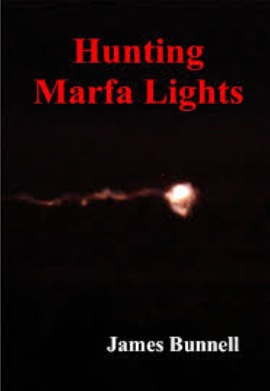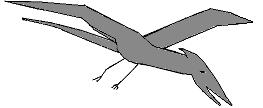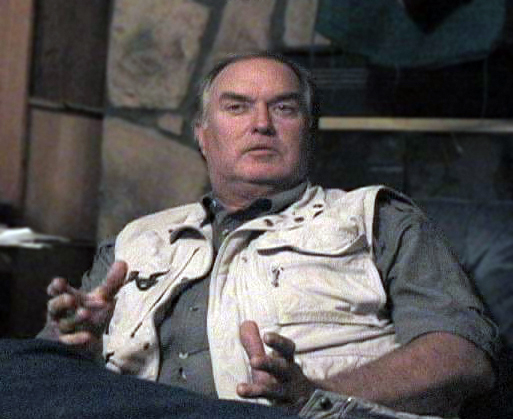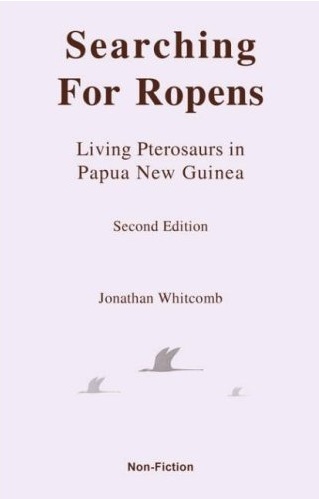I am grateful for the many eyewitnesses who have contacted me, with their reports, over the past ten years. I am also grateful for my associates who, like me, have explored in remote jungles of Papua New Guinea, searching for living pterosaurs. We are convinced that many of the reports are genuine accounts of encounters with modern pterosaurs. Nevertheless, “not everybody embraces a live pterodactyl.”
So why have some persons in Western countries objected to our investigations and our belief in these wonderful creatures of the sky? Before getting into those details, let’s consider a fictional story.
During the last weeks of the World War II conflict in Europe, as Allied soldiers were rolling into Germany and capturing Luftwaffe air fields, one German fighter pilot, on the last German air field, was left with one fighter plane still in operating condition. As he climbed into his cockpit, he looked down at the ground worker and said, “I don’t care if the enemy soldiers are about to overrun the field. I care only about what I can do after the war. I will be out of a job, so how will I pay a psychiatrist to help me overcome this nagging feeling that everybody is trying to shoot me down?”
I know that feeling. You’ve probably had it yourself at some time. But that usually comes from looking at life from a narrow perspective and concentrating on the pain of a moment. On the other hand, sometimes many opponents of an idea may try to shoot down those who are greatly outnumbered. Let’s consider a few moments in which my associates and I have been in the cross hairs of our opponents’ gunsights, directly or indirectly. Sometimes we do appear to be outnumbered.
.
The True Nature of the Opposition
I have noticed, over the years, that a few paleontologists who have taken notice of the living-pterosaur investigations conducted by me and my associates—those persons, when pressed regarding the concept of universal extinction of all species of pterosaurs, will in the end admit the possibility of a modern living species. But they insist on its improbability, and they belittle us for searching for those reported flying creatures and they may even belittle those who support the idea of pterosaur non-extinction.
Those few paleontologists who comment on our investigations can be ruthless in criticizing us for searching for modern pterosaurs and for proclaiming our ideas about sighting reports; that ruthlessness, however, helps reveal the true nature of the opposition. A few paleontologists strongly object not to the theoretical possibility of a living pterosaur but they object to us who have actively promoted the idea.
I feel it’s not my place to judge any individual’s motivations. But the negative judgments that my associates and I have received have not, at least in large part, been scientific objections; they have more often been judgments of our origin philosophies or our religious beliefs or our motivations in searching for living pterosaurs.
The opposition has not just been from paleontologists. A few non-scientists, at least, have attacked us, even more brutally than have a few scientists or students of science. Let’s look at examples from paleontologists first.
.
“Pterosaurs alive in, like, the modern day”
I will not here name the paleontologist who wrote the above-titled blog post. His introduction included: “Here, hopefully, is everything you want to know about modern day pterosaurs, but were afraid to ask . . .” Unfortunately, for those who seek for the truth about the possibility of non-extinct pterosaurs, the paleontologist failed to mention any of the following cryptozoologists:
- Garth Guessman
- Paul Nation
- Jonathan Whitcomb
- David Woetzel
Those four (I include myself) not only explored in Papua New Guinea (searching for ropens or indavas or flying creatures with other names), but have pursued the possibility of modern living pterosaurs for years. Books have been written about searching for these non-extinct flying creatures, with significant content being taken up by the expeditions of those four American cryptozoologists. At least two scientific papers have been published in peer-reviewed journals of science, articles on evidences for pterosaurs being alive in the modern day. And those books and scientific papers have been written by two of the above four cryptozoologists.
So why did the blog post “Pterosaurs alive in, like, the modern day” give no mention, by name, of any of those four men? I suggest it might have given some credibility to what the writer was loath to give: the possibility that some pterosaurs may be non-extinct. It’s much easier to write about what most paleontologists have long taken for granted and about a questionable newspaper article published in 1856.
Of course this is not an example of the four of us being in the “cross hairs of our opponents’ gunsights,” but the plane we are flying in, so to speak, is being shot at, without a doubt.
.

.
“Living Pterodactyls?” by Glen J. Kuban
The paleontologist Glen Kuban says, “the main evidence for living pterosaurs is a handful of reported sightings, rather than actual specimens or even clear photos of the creatures.” Good point. What that means is that living-pterosaur investigations have been cryptozoological rather than biological examinations.
But scientific discoveries often begin with small steps, and many significant scientific advancements have been made by persons who were not recognized as scientists at the time of their initial investigations. Albert Einstein, for example, was just a patent clerk in Switzerland when he began using his imagination to delve into concepts that had not previously been considered. The truth at first may appear impossible and too revolutionary.
Kuban begins his long web page by emphasizing that supporters of the concept of modern living pterosaurs are “strict creationists or cryptozoologists.” He soon mentions, “Even among creationists and cryptozoologists, only a small portion actively promote the idea of living pterosaurs.” I agree, my associates and I are very few in numbers. Galileo and Copernicus were also outnumbered.
But Kuban then avoids anything published by those few supporters and instead gets into a web page written by a man who is not one of those specialists but is a writer on paranormal phenomena in general. Soon after that, Kuban gets into a questionable newspaper article published in 1856 (the same one examined by another skeptic).
This paleontologist’s web page is long, with references to Carl Baugh, Garth Guessman, David Woetzel, and me. Again, he emphasizes the mistakes of earlier writings and reports, which is not surprising, as the copyright for his page is 2004-2010. Kuban does better than some other skeptics in mentioning more recent research, but it is still not nearly deep enough, even if he were thinking objectively about the subject.
He says that at least some sightings may be from encounters with fruit bats. He then acknowledges that fruit bats do not have long tails, do not grow have wingspans of “25 feet,” and do not have bioluminescence. Why, then, does he say anything about those Flying Fox bats? He says nothing about even one sighting that could have been a bat. But that is only the beginning of the reasoning problems in that paragraph.
He says that the size of the flying creatures “would be difficult to judge from a distance.” He fails to mention any particular sighting, and the 1944 Finschhafen encounter was of a “pterodactyl” with a wingspan estimated at about 29 feet; that creature was only about 90 feet away from Duane Hodgkinson. It seems he says nothing about that sighting anywhere in his lengthy page.
.

Harbor east of Finschhafen, Papua New Guinea, near the 1944 sighting area – photo by Jonathan David Whitcomb, from his expedition in 2004
.
Another problem with that paragraph (the one next to two photos of fruit bats) is this: He declares that larger creatures should be seen more often. But why believe that the largest ones are not rare, Mr. Kuban? And why assume that they are not seen very often? Kuban not only avoids the 1944 sighting but also the 1997 Perth, Australia, sighting. And why does he say nothing about the sighting by Brian Hennessy?
Has Mr. Kuban considered the consequence of his approach? An average reader, having no other experience with reports of apparent living pterosaurs, who makes it to the end of Kuban’s page would most likely come to believe that no person has ever seen any flying creature with a wingspan greater than 25 feet and that reports of 25-foot wingspans are mistaken. But Kubans has failed to acknowledge those reports that involve wingspans close to 50 feet.
Does this paleontologist have any idea of the significance of the combination of the 1997 Perth sighting and the Lake Pung (Umboi Island) sighting? Each of those two sightings involved multiple eyewitnesses. I interviewed both of the Perth eyewitnesses and three of the Lake Pung eyewitnesses myself. Those groups were of different cultures, vastly different, yet their reports of apparently-featherless flying creatures were the same in this regard: The wingspans may have been as great as 50 feet.
If Mr. Kuban had researched more deeply, and with an open mind, and with a clearer vision, he would have come to a very different conclusion. Although he included much more significant information in his page than what other skeptics have included in theirs, he failed to see, so to speak, the trees that are hidden in the deep shadows of larger trees that are ignored.
.
Smithsonian Blog Post
I’ve written before about a Smithsonian blog post “Don’t get Strung Along by the ‘Ropen’ Myth.” The original post by Brian Switek was published on the Smithsonian site on August 16, 2010. It’s a mixture of truth and error, beginning with two paragraphs about how Switek was disappointed in his youth by the failure of “hucksters, overly-credulous wildlife enthusiasts” and “young-earth creationists” to discover a living dinosaur in a distant tropical jungle.
That evaluation, which includes the word “hucksters,” appears to me to be a form of bulverism, and a cheap version of bulverism at that. Switek also said, “Sadly, some people still get duped by the fantastic claims espoused by ‘professional monster hunters.'” But the example he gives is an article written by somebody who seems to have been very careless in his research. The article by Terrence Aym was a zealous attempt to support living pterosaur investigations; unfortunately it contains critical errors, including a photograph of a Frigate Bird as if it were evidence for the existence of the ropen.
But let’s concentrate on Switek’s post. Looking past his reference to Aym’s flawed article, look at what Switek says about David Woetzel: He begins by quoting religious portions of what my associate has written, then a little later says that there is no “solid evidence to give the claims of Blume and Woetzel any credibility.” How much that deserves a response!
Switek avoids any reference to what both Woetzel and Blume saw with their own eyes. Switek quotes Woetzel’s remarks about the fiery flying serpent of the Bible, and other religious references, and says, “the pterosaurs also give off a kind of bioluminescent glow they use to catch fish,” as if the religious references somehow discredit that idea. Switek fails to mention any scientific reasoning against a bioluminescent flying creature, and he fails to mention that Woetzel himself, in 2004, saw a strange light that flew almost horizontally and disappeared behind a mountain on Umboi Island. He also fails to mention that James Blume, a few years earlier, had observed a strange light but at a closer distance.
Had Switek researched this subject more deeply, he would have found that many other eyewitnesses, from various nations and cultures, have also observed those strange flying lights, and that there are correlations between those lights and sightings of large flying creatures at night. Those flying lights and the reports of apparent pterosaurs that are associated with those lights—that subject could fill most of the pages of a small book. Switek avoids that subject, for whatever reason, probably leaving some readers with the impression that there is nothing worth mentioning regarding bioluminescent pterosaurs.
Much more could be said about what Switek conveniently avoided mentioning, and much could be said about what other skeptics have written, skeptics who are less skilled and less prolific in writing than the writers mentioned above. But for now, this is enough.
###
.
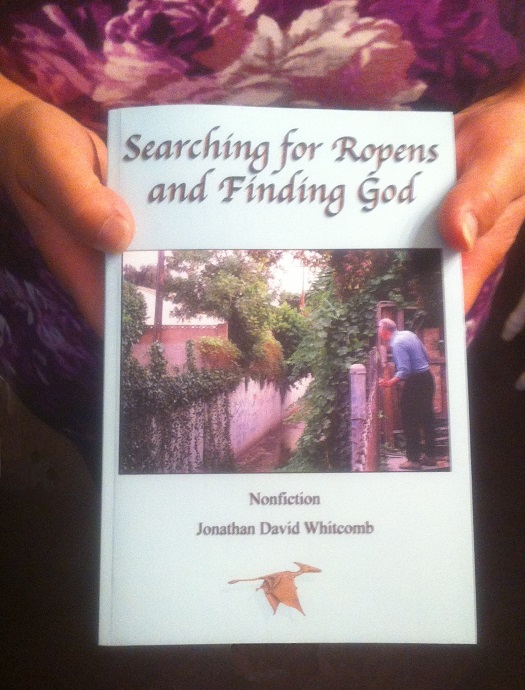
Nonfiction by Whitcomb – Searching for Ropens and Finding God
.
Paleontologist “in the Modern Day”
His lengthy writings, on that one page [“Pterosaurs alive in, like, the modern day”], about questionable reports—they ring like strawman arguments to me, for the credible accounts are entirely neglected . . .
.
Woodpeckers, Flintstones, and Long-Tailed Pterosaurs
How far some skeptics will go to find a non-pterosaur explanation for pterosaur sightings! Featherless long-tailed flying creatures with long bony head crests are not misidentifications of woodpeckers . . .
.
Review of a Pterosaur Book
This is a reply to a critical evaluation of a cryptozoology book (Live Pterosaurs in Australia and in Papua New Guinea). The original review was titled “More religion than investigation,” but the reviewer changed that title after being confronted with its incorrectness.
Perhaps 1% of the book mentions two missionaries (one in Africa and another in Papua New Guinea) and a few creationist explorers and how the Biblical creationist perspective made it easier for them to search for living pterosaurs. But that 1% of the book gives no details about any religious beliefs nor does it promote any religion of those men. Their involvement is just a matter of record.
.
More on Manta Ray Misidentification
How could any person see a Manta ray jump out of the water and come to believe it was an extant pterosaur? I have read nothing written by Mr. Drinnon that explains how such an incredible mistake could have taken place . . .
.
